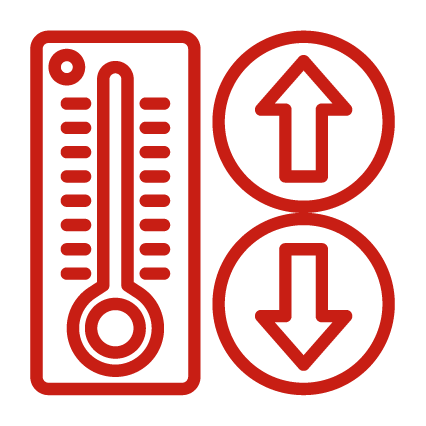Lighting Engineering Solutions for the Heliport sector
A heliport is an area designed and equipped for helicopters to take off and land. It comprises the touchdown and lift-off area (TLOF) and the final approach and take-off area (FATO), the area where the final manoeuvres are performed before touching down.
Therefore, the lighting is of the utmost importance.
Helipad lighting generally consists of the lights installed in a circle or square between the TLOF surface and the FATO, the surface around the entire landing area. In addition, lights are provided to illuminate the entire heliport and the windsock must also be illuminated.
«When clients bring us a challenge, our engineers design the best engineering solution and succeed in satisfying them as the result of a process that has been tried and tested with thousands of applications installed worldwide.»
Finding solutions and providing excellence
We are a team of engineers that is highly specialised in designing aircraft warning light solutions. Write a message and get in touch with us.
Regulations for Heliports and airfield lighting
The regulations that apply when constructing a heliport depend on where the structure is going to be built. The main reference guidelines are the international ones developed by the ICAO in Annex 14, Volumes I and II; however, some countries have opted to draw up their own domestic regulations, the most important of which is the one developed by the FAA for the USA.
«We help our clients develop their applications all over the world, by supporting them with our expertise. During our 30+ years in business, we have designed systems for all types of regulations, such as those of the ICAO, FAA, ENAC and CAA.»
Don’t know where to start?
As a result of having installed thousands of systems all over the world, we are able to produce a definitive summary concerning the best practices for aircraft warning systems.
Heliport lighting systems configurations
Heliport lighting generally consists of lights installed in a circle or square between the TLOF (touchdown and lift-off area) surface and another around the entire landing area, i.e. the FATO (final approach and take-off area). The FATO is usually defined as a square area and also encloses the TLOF. In turn, the FATO is contained within a square (or free) area, the SAFETY ZONE.
The lights between the FATO and TLOF must be green (ICAO and FAA regulations) and can be inset or elevated. The previous standard called for the use of a yellow (amber) light instead, a colour which is still preferred in many places. Furthermore, there are many colour variations, and these depend on the heliport’s ownership and jurisdiction.
«It is the designer’s responsibility to analyse the project specifications and find the best solution in terms of functionality, cost and regulatory compliance.»
Surface-level heliports are located on the ground and are characterised by large spaces. They are usually located in an area near a conventional airport. Actually, there is no definitive “most efficient configuration” for surface-level heliports: it is more about considering the different aspects and being able to propose, on a case by case basis, the “right” layout. Surface-level heliports lighting usually comprises:
A heliport beacon (SEGS23H2K) should be provided wherever long-range visibility is deemed necessary.
Floodlights (SEGS23HFLOOD) are required to illuminate the TLOF (touchdown and lift-off area). The lights must be positioned in such a way as to not dazzle the pilots or personnel working in the area.
FATO lights can either be elevated (SEGS24H100) or inset (FATO-M1_24SC). They must be evenly-spaced along the edges of the FATO:
spacing < 50 m Rectangular heliport
The lights must be placed at intervals of no more than 50 m with a minimum of 4 lights on each side, including the lights at each corner.spacing < 5 m Circular heliport
The lights must be placed at intervals of no more than 5 m with a minimum of 10 lights.TLOF lights can either be elevated (SEGS24HG30) or inset (TLOF-M1_24SC). They must be positioned along the edges of the TLOF, within a distance of 1.5 m from the edge.
spacing < 5 m Rectangular heliport
The lights must be evenly spaced at an interval not exceeding 5 m. There should be a minimum of 12 lights (4 lights on each side, including one light in each corner).Circular heliport
The lights must be evenly spaced at an interval not exceeding 5 m. There should be a minimum of 14 lights.
Rooftop heliports are “elevated heliports” characterised by limited spaces (The FATO coincides with the TLOF), close proximity to other vertical buildings and a relatively high surrounding ambient light level. Actually, there is no definitive “most efficient configuration” for rooftop heliports: it is more about considering the different aspects and being able to propose, on a case by case basis, the “right” layout. Rooftop heliports lighting usually comprises:
A heliport beacon (SEGS23H2K) should be provided wherever long-range visibility is deemed necessary.
Floodlights (SEGS23HFLOOD) are required to illuminate the TLOF (touchdown and lift-off area). The lights must be positioned in such a way as to not dazzle the pilots or personnel working in the area.
TLOF lights must be inset (TLOF-M1_24SC) and must be positioned along the edges of the TLOF, within a distance of 1.5 metres from the edge.
spacing < 3 m Rectangular heliport
The lights must be evenly spaced at an interval not exceeding 3 m. There should be a minimum of 12 lights (4 lights on each side, including one light in each corner).Circular heliport
The lights must be evenly spaced at an interval not exceeding 3 m. There should be a minimum of 14 lights.
The helidecks on ships are “elevated heliports” characterised by very limited spaces (The FATO coincides with the TLOF). Actually, there is no definitive “most efficient configuration” for helidecks on ships: it is more about considering the different aspects and being able to propose, on a case by case basis, the “right” layout. The helidecks on ships lighting usually comprises:
A heliport beacon (SEGS23H2K) should be provided wherever long-range visibility is deemed necessary.
Floodlights (SEGS23HFLOOD) are required to illuminate the TLOF (touchdown and lift-off area). The lights must be positioned in such a way as to not dazzle the pilots or personnel working in the area.
TLOF lights must be inset (TLOF-M1_24SC) and must be positioned along the edges of the TLOF. The lights must be evenly spaced at an interval not exceeding 3 metres. There should be a minimum of 14 lights.
The helidecks on offshore platforms are “elevated heliports” characterised by limited spaces (The FATO coincides with the TLOF) and close proximity to other vertical structures such as cranes or chimneys. Actually, there is no definitive “most efficient configuration”: it is more about considering the different aspects and being able to propose, on a case by case basis, the “right” layout. The pad is usually dark in colour, to contrast with the platform’s lights. The lighting requirements for this type of elevated heliport are very important:
Floodlights (SEGS23HFLOOD) are required to illuminate the TLOF (touchdown and lift-off area). The lights must be positioned in such a way as to not dazzle the pilots or personnel working in the area.
TLOF lights must be “inset” (TLOF-M1_24SC) and must be positioned along the edges of the TLOF. The lights must be evenly spaced at an interval not exceeding 3 metres. There should be a minimum of 14 lights.
Surface-level heliports are located on the ground and are characterised by large spaces. They are usually located in an area near a conventional airport. Actually, there is no definitive “most efficient configuration” for surface-level heliports: it is more about considering the different aspects and being able to propose, on a case by case basis, the “right” layout. Surface-level heliports lighting usually comprises:
A heliport beacon (SEGS23H2K) should be provided wherever long-range visibility is deemed necessary.
Floodlights (SEGS23HFLOOD) are required to illuminate the TLOF (touchdown and lift-off area). The lights must be positioned in such a way as to not dazzle the pilots or personnel working in the area.
FATO lights can either be elevated (SEGS24H100) or inset (FATO-M1_24SC). They must be evenly-spaced along the edges of the FATO:
spacing < 50 m Rectangular heliport
The lights must be placed at intervals of no more than 50 m with a minimum of 4 lights on each side, including the lights at each corner.spacing < 5 m Circular heliport
The lights must be placed at intervals of no more than 5 m with a minimum of 10 lights.TLOF lights can either be elevated (SEGS24HG30) or inset (TLOF-M1_24SC). They must be positioned along the edges of the TLOF, within a distance of 1.5 m from the edge.
spacing < 5 m Rectangular heliport
The lights must be evenly spaced at an interval not exceeding 5 m. There should be a minimum of 12 lights (4 lights on each side, including one light in each corner).Circular heliport
The lights must be evenly spaced at an interval not exceeding 5 m. There should be a minimum of 14 lights.
Rooftop heliports are “elevated heliports” characterised by limited spaces (The FATO coincides with the TLOF), close proximity to other vertical buildings and a relatively high surrounding ambient light level. Actually, there is no definitive “most efficient configuration” for rooftop heliports: it is more about considering the different aspects and being able to propose, on a case by case basis, the “right” layout. Rooftop heliports lighting usually comprises:
A heliport beacon (SEGS23H2K) should be provided wherever long-range visibility is deemed necessary.
Floodlights (SEGS23HFLOOD) are required to illuminate the TLOF (touchdown and lift-off area). The lights must be positioned in such a way as to not dazzle the pilots or personnel working in the area.
TLOF lights must be inset (TLOF-M1_24SC) and must be positioned along the edges of the TLOF, within a distance of 1.5 metres from the edge.
spacing < 3 m Rectangular heliport
The lights must be evenly spaced at an interval not exceeding 3 m. There should be a minimum of 12 lights (4 lights on each side, including one light in each corner).Circular heliport
The lights must be evenly spaced at an interval not exceeding 3 m. There should be a minimum of 14 lights.
The helidecks on ships are “elevated heliports” characterised by very limited spaces (The FATO coincides with the TLOF). Actually, there is no definitive “most efficient configuration” for helidecks on ships: it is more about considering the different aspects and being able to propose, on a case by case basis, the “right” layout. The helidecks on ships lighting usually comprises:
A heliport beacon (SEGS23H2K) should be provided wherever long-range visibility is deemed necessary.
Floodlights (SEGS23HFLOOD) are required to illuminate the TLOF (touchdown and lift-off area). The lights must be positioned in such a way as to not dazzle the pilots or personnel working in the area.
TLOF lights must be inset (TLOF-M1_24SC) and must be positioned along the edges of the TLOF. The lights must be evenly spaced at an interval not exceeding 3 metres. There should be a minimum of 14 lights.
The helidecks on offshore platforms are “elevated heliports” characterised by limited spaces (The FATO coincides with the TLOF) and close proximity to other vertical structures such as cranes or chimneys. Actually, there is no definitive “most efficient configuration”: it is more about considering the different aspects and being able to propose, on a case by case basis, the “right” layout. The pad is usually dark in colour, to contrast with the platform’s lights. The lighting requirements for this type of elevated heliport are very important:
Floodlights (SEGS23HFLOOD) are required to illuminate the TLOF (touchdown and lift-off area). The lights must be positioned in such a way as to not dazzle the pilots or personnel working in the area.
TLOF lights must be “inset” (TLOF-M1_24SC) and must be positioned along the edges of the TLOF. The lights must be evenly spaced at an interval not exceeding 3 metres. There should be a minimum of 14 lights.







